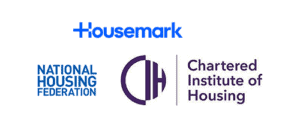Falls management and the benefits of tech
By Tunstall Healthcare
Falls are the largest cause of emergency hospital admissions for older people with 70,000-75,000 people fracturing their hip as a result of falls in the UK each year, leading to medical costs of over £2 billion.
Gavin Bashar, UK & I Managing Director at Tunstall Healthcare, discusses how technology can be used to support people at risk of falls, including those living with balance disorders.
Enabling the right systems and solutions
Falls can reduce confidence, and precipitate admission to residential care, so it’s therefore important to consider and embrace different methods of falls management to reduce mortality rates, and enable vulnerable people to live safely and independently for as long as possible.
As technology advances, we can use data to provide actionable insights, and deliver better, more informed and more proactive care. We are seeing a growing number of emerging fall prevention and management-related technologies which have the potential to hugely minimise the number of falls and associated care costs.
Benefits of using technology
The speed of help being received after a fall has a significant impact on outcomes, as an extended period of time on the floor can exacerbate any injuries. Effectively managing falls can also prevent future incidents, as research shows that 30-40 percent of people who fall will do so again.
Technology has a key role to play in reducing the number of falls and minimising the consequences. Digital solutions include a range of unobtrusive alarms and sensors which detect events and are linked to 24-hour care provision, providing peace of mind for families and carers and allowing people to live independently for longer.
Devices such as wearable fall detectors and bed occupancy sensors can ensure help is on hand quickly after a fall. Bed occupancy sensors can provide real time alerts when a user leaves their bed and doesn’t return within a preset period of time. They can even be programmed to switch on lights so that people can find their way to and from their bed easily and safely. Should a sensor be activated, either automatically or by the user, an alert will be immediately received at a monitoring centre where the operator will contact family members, response teams or the emergency services to provide help.
What does this look like in practice?
NHS Calderdale Clinical Commissioning Group and Calderdale Council have been working with Tunstall Healthcare since 2012 to support care home residents through technology. The programme combines a Multi-Disciplinary Team, real-time access to live clinical records for GPs, and telecare and telehealth systems, supporting over 1,300 residents. Comparing 2016/17 to 2017/18 they found that emergency admissions relating to falls decreased by 7.7%, resulting in an annual savings in excess of £200,000.
By designing and investing in digital solutions which don’t disenfranchise sectors of society and are unobtrusive, we can enhance the security and monitoring of vulnerable people at risk of falls, while also ensuring they are able to live independently for longer.
For more information, please visit www.tunstall.co.uk.




